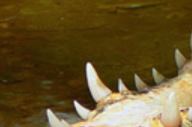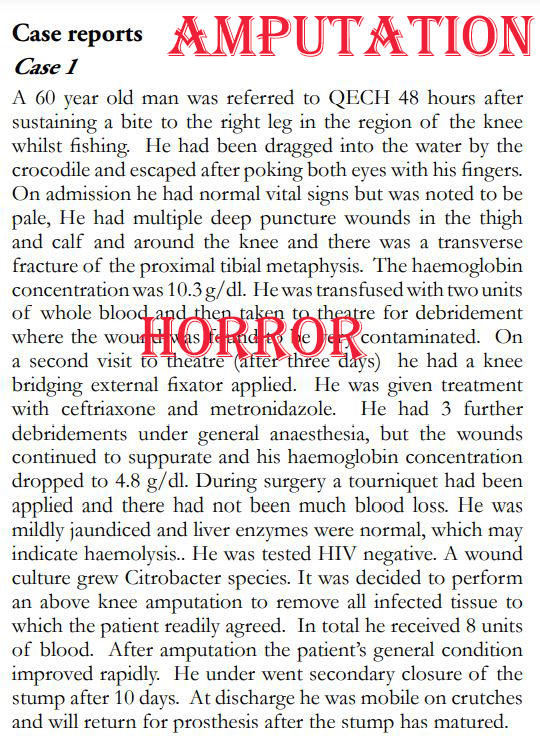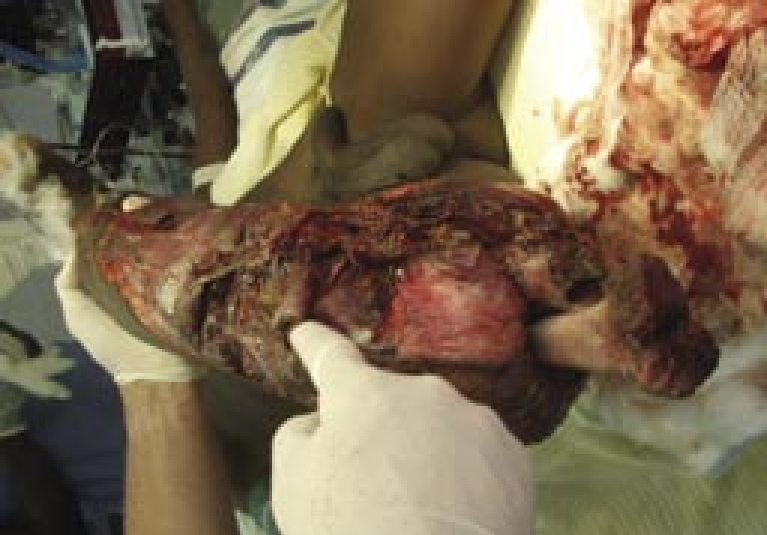Devoured by a croc? Good God! Being eaten by a crocodile might not seem to be the sort of activity that might be enjoyed. In fact, there are some “Againsts” and I cannot imagine too many “Fors.”
“The crocodile, mate, no he ain’t armless!”

Devoured by a croc – no joke. Forgive my grisly sense of humour, but I am making a point. I am deadly serious – I am out to “SOS” – definition at end of article.
Devoured by a croc is on the menu.
The first thing to understand is that this might not be a lengthy period of degustation, one way or the other. It would not be at all like watching a re-run of “Gone With the Wind.”
To begin, there would likely be no warning. No period of worry or concern. There would be a sudden surprise. Some might say shock, but you not live long enough to fully register this shock. The mighty beast, possibly weighing close to a tonne, will be upon you, biting hard with incredible savagery before you have had time to think, “What the hell?”
Devoured by a croc – impalement.
The crocodile, assuming that it is Australia’s bete noire, the Saltwater Crocodile, will most likely have 70 big teeth. Some of these teeth will be roughly 75 mm in length or 3 inches in the old language. You may or may not see these teeth, but you will feel them upon you. Then, soon, you will know what it is like to be devoured by a croc.

You will realise that they are not sharp, not designed for cutting. These teeth are designed to penetrate, and penetrate deeply. The teeth and jaws are a terrible combination designed to hold. The design is such that teeth join and lock together in the upper jaw, rather like iron bars in a prison cell. In order to bring about the old, devoured by a croc thing, the crocodile can swallow large lumps of flesh, so cutting up the meat not required.
The crocodile does not bite you in the way that you might imagine. No way is this like a dog biting a human. Not at all.
The crocodile has an amazing bite, and it attacks with incredible power and speed. It is more like being hammered than bitten. The savagery of that bite, some 3700 lbs per square inch, tends to impact with such mighty power as to destroy the cells of your flesh.
The comparison? The best of human biting power is likely 200 lbs per sq inch and even big strong lions cannot manage much more than 1000 lbs per square inch. A mere tickle compared to the crocodile.
The king of all biters is the saltwater crocodile; this bite means necrosis, where the death of tissue is instantaneous. So sudden and so final.
Treatment? Either death devoured by a croc or survive for surgery etc. There is no way to treat this aspect of the injury. One must turn to a removal process called debridement, the cutting away of dead flesh. There is likely a second round of debridement, cutting away the dead and leaving the living. The wound may resemble the dead flesh of frostbite. But a bit more ugly.
Infection is the secondary problem, but after all, you are being devoured and infection is the least of your concerns.
Say you do survive the attack? Say that you avoid the bad thing -devoured by a croc. So then? I will provide some information that is quite shocking on first read. And maybe worse if you read it again.

Ward Round-Crocodile bites in Malawi: microbiology and surgical management
- March 2009
- Malawi medical journal: the journal of Medical Association of Malawi 21(1):29-31
DOI: 10.4314/mmj.v21i1.10986
- Source
- PubMed
Authors:
- Addis Ababa University
5 patients sustained injuries from a crocodile bite. Three patients required amputation of a limb. This is due both to the “severe soft tissue injury associated with a crocodile bite and the unusual normal oral flora of the crocodile”
Thoughts on crocodile population control should be uttered only by those acutely aware of the danger. For example, “Progressive tissue destruction and haemolysis are complications of such infected wounds. An antibiotic regime is recommended that covers gram negative rods, anaerobes and may include doxycycline, as well as the need to have a low threshold for early amputation.”
Crocodile bites are merciless…

SOURCE: (PDF) Ward Round-Crocodile bites in Malawi: microbiology and surgical management (researchgate.net)
Back to the attack on your frail human form.
Review. the crocodile has lunged at you from its hiding place in the water. It has the capacity to come quickly,
According to Crocodilian: “saltwater crocodiles (around 4 metres total length) moving at 12 metres per second for a quarter of a second, which is long enough to capture prey standing within one body length before it even has time to react. This is where crocodiles excel – launching themselves into motion from a standing start, hoping to cover the short distance between themselves and their prey before the prey can react.”
SOURCE: Crocodilian Biology Database – FAQ – How fast can a crocodile run?
So your crocodile doesn’t give you much time to react. It is upon you before you can blink.
Once on you the powerful jaws clamp with a snap! As your bones splinter, you may hear the Snap, Crackle, and Pop! It is not Rice Bubbles, mate. It is sheer hell!
Now the beast has you it will not easily let go. You can poke it in the eyes and that might work. But hurry up as you may not have very long. This depends on whether you were so silly as to get in the water with the bloody great beast. Oh, yes, I accept that you did not know he was there!
Or maybe you are leaning forward, looking into the water when the beautiful pool erupts with huge teeth predominant?
No? O.K. You were standing on the bank and minding your own business. No matter. The big crocodilian can get you anyway.
“Have a heart Mr. Crocodile.”
I don’t think so………………….
But this is about “hearts” right?
Crocodiles are reptiles. And you may, or may not know, that reptiles are not like humans in that they have a 3 chambered heart. Mammals have a four chambered heart.
But these crocodiles, “prehistoric” monsters, are the exception to the reptile breed and they do have a heart rather like ours. Yes, they have the four chambered heart that we have come to know and love so much.
Some anatomical knowledge
“The enormous crocodile — owner of nature’s most complex heart.
Unlike us, however, they have two aortas — the blood vessel in humans that carries blood from the heart to the rest of the body. They have a right aorta that comes out of the left ventricle and a left aorta from the right ventricle”.
British Heart Foundation
But what about the foramen of panizza.
This little valve controls the flow of blood and the clever beasts can shunt blood where and when they want.
The really clever bit is that crocodiles can take the best of the best and send that oxygenated blood to the brain. The poorly oxygenated blood can be sent to the tail where the best of the blood is not desperately required.
“The heart of a crocodile is different to other reptiles in that it has four chambers just like birds and mammals. Blood is sent to the lungs for gas exchange from the right, and from the left ventricle it is pumped to the body. Thus the two types of blood do not mix in the heart. However, what is interesting is that blood is mixed as soon as it leaves the heart via a valve (foramen of panizza) placed in between the right and left aorta.” https://fountainmagazine.com/2013/issue-92-march-april-2013/extraordinary-blood-circulation-in-crocodiles-march-april-2013
The record for a human holding their breath under water is around 12 minutes. Elephant seals can get up to around 2 hours, and a Cuvier’s beaked whale once clocked a dive of over 137 minutes. But the longest recorded dive for a crocodile is 387 minutes, and Professor Franklin believes they can manage up to 8 hours in colder waters before resurfacing for air.
https://www.abc.net.au/science/articles/2000/08/25/167223.htm
Now you know he can stay under the water a bit longer than you. Reflect on that.
Plan A. Get you in the water! That is, unless if you, poor fool, were already in the water. Roll you around with those great teeth holding and ripping at the same time. Put you down for a solid dunking. He can stay under longer than you. He is Godzilla!
Damn near drowned and definitely chewed out and chewed up.
Are you going to survive? It depends. But in truth, even if you survive the attack, and you survive the surgery, the treatment, the bacterial onslaught, and so on, will you survive psychologically speaking?
Methinks that at the best, a little of you would have been devoured by that horribly tenacious beast.
More control needed. SOS (Save our Swimmers).
Ed – Chew – Cation……………… free of charge Leighton Clark
P.S. My novel “The Sixth Season, Gudjewg” provides a wealth of detail about crocodiles and men. A good read and an education. There are a few stories – man devoured by a croc.